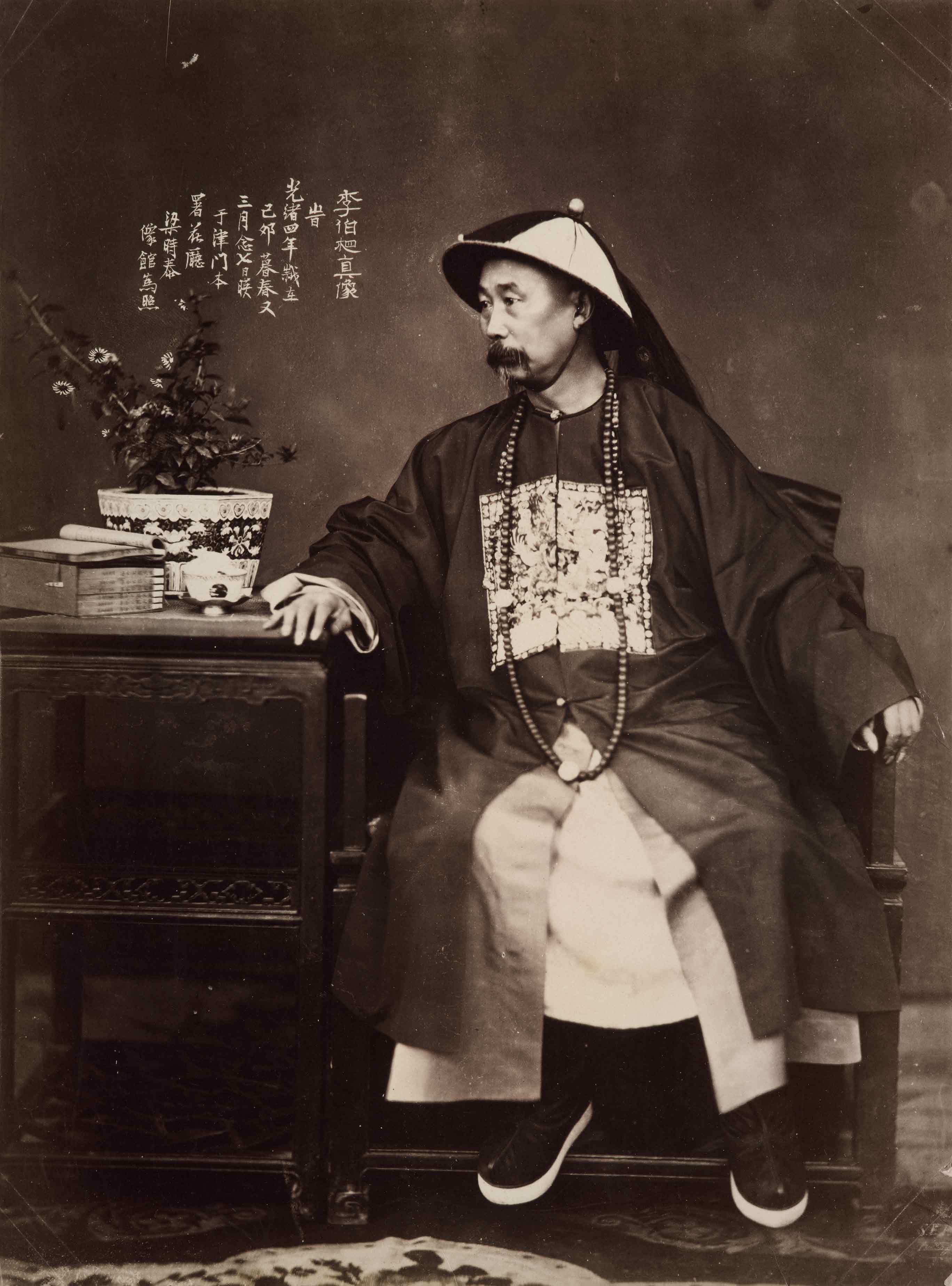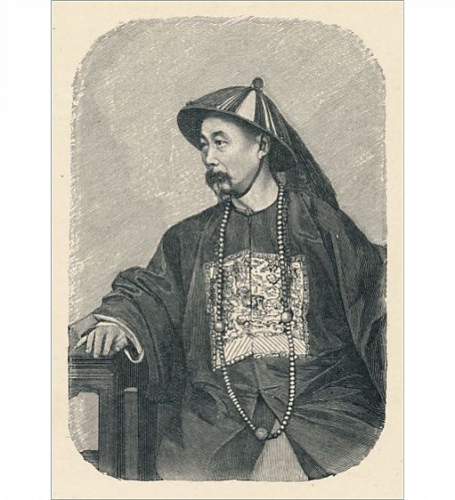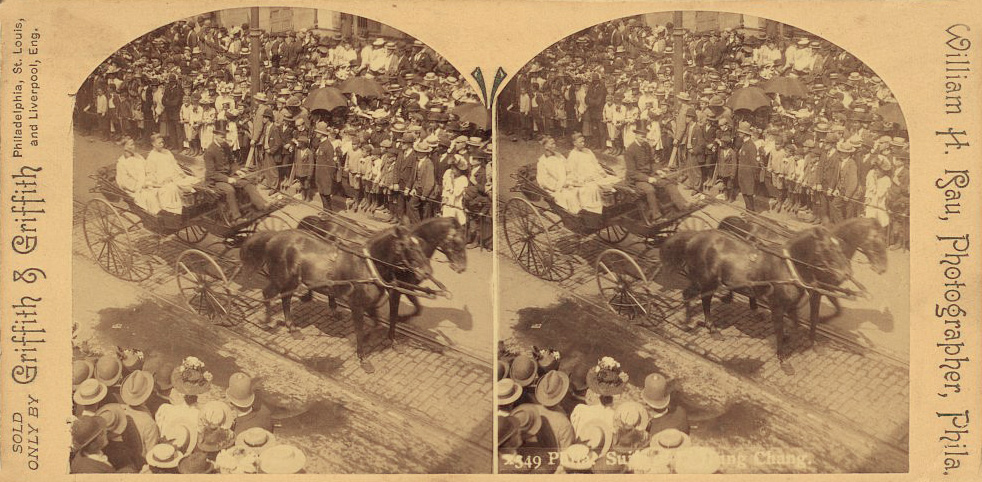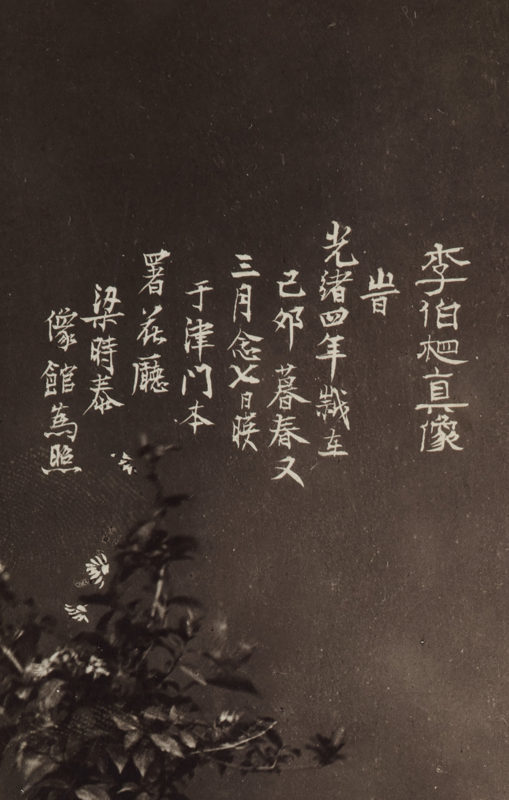

Liang Shitai
1870s
Albumen silver print
29 x 21 cm
From the Loewentheil Collection
梁时泰
1870年代
蛋白印相
29 x 21 厘米
洛文希尔收藏
Liang Shitai’s portrait of the Marquis Li Hongzhang in the Loewentheil Collection is a masterpiece of nineteenth-century portrait photography. Liang Shitai was exacting in every aspect of photography. He sought authentic, revealing poses, and he captured them using precise lighting and advanced chemical techniques.
Liang Shitai’s reputation as China’s foremost portrait photographer resulted from his ability to achieve a flattering physical likeness while reflecting the sitter’s inner character. As a result, China’s most influential men and women sat for him to take their portraits.
Li Hongzhang was the first official in China to recognize the power of the photographic image. He circulated his image around China and the world with and was the earliest Chinese dignitary whose face was recognized across China and the globe. Li Hongzhang gave photographic portraits as gifts to visiting diplomats and his image was further circulated around the world in international newspapers, magazines, and other publications.

Li –Hung-Chang. Engraving after a photograph by Liang Shitai. Published in the Illustrated London News and numerous other international publications.
In this portrait of the powerful Qing Dynasty statesman, Li Hongzhang, Liang Shitai captures his subject’s authority and power. Li Hongzhang gazes away from the camera, creating a pensive atmosphere in the photograph, as if the viewer is gaining a glimpse of the private thoughts of the important diplomat. Liang Shitai carefully posed Li Hongzhang to suggest that he is about to leap from his chair and shape the course of history.
Li Hongzang valued technological innovation and was impressed by the talent of artists such as Liang Shitai and his contemporary Lai Fong. These giants of photography were able to capture both a person’s physical appearance and their inner character and spiritual being. Li Hongzhang quickly embraced photography, recognizing that the portraits of Liang Shitai have the presence and power of ancient Chinese paintings. He compared photography to master paintings by Mi Fu (1051 -1107) and his son Mi Youren (1074- 1153).
Photography Made Li Hongzhang an Internationally Famous Chinese Leader
Li Hongzhang understood the new technology of photography was changing history and that it would tell the story of the people of China. He was photographed frequently, and by every major late Qing Dynasty photographer. Li Hongzhang embraced photography as a mechanism for recording the history of his country, and as a tool that was educating and entrancing the public with visual information. Portraits of Li Hongzhang and the budding field of photojournalism spread the image of the Chinese leader around the world. Photographers like Liang Shitai made Li Honghzang a famous face and newspapers made Li Hongzhang an international household name.

Li Hongzhang, one of the most influential people of the nineteenth-century, was a towering figure in China’s industrial and military modernization. The politician, general, and world-renowned diplomat served in key positions of the Imperial Court. He “rose to prominence in China as a brilliant general and then spent 25 years as the country’s preeminent diplomatic negotiator for the Qing Dynasty” (Xiaobing Li, China at War).
The statesman was an international celebrity. He was greeted around the world with grand military and naval displays, parades, and enormous crowds. Newspapers and magazines around the world reproduced photographs of him as woodcuts. One English language newsaper called him “not only the foremost figure in the Chinese Empire, but … in many respects one of the most remarkable men of modern times.” Li Hongzhang attended the coronation of Nicholas II of the Russian Empire, was made a Knight Grand Cross of the Royal Victorian Order by Queen Victoria and was similarly honored by heads of state and other leaders when he toured America, Europe and Canada to advance China’s interests.

Li Hongzhang, when he visited Philadelphia. Philadelphia: Griffith & Griffith, [1896]. From the Library of Congress.

As a Chinese artist Liang Shitai followed established traditions of Chinese art in his photographs. He used tools, brushes, and ink to artfully add calligraphy in many of his glass plate negative. This was a painstaking practice that often involved printing with a composite negative.
Calligraphy, literally meaning “beautiful writing,” has been appreciated in China as a supreme art form, more valued than painting and sculpture, and ranked alongside poetry, from a very early period. Calligraphy was established as one of the most important Chinese art forms from as early as the Han Dynasty. All educated men and women were expected to be proficient in the art, and that expectation that has endured through modern times. Contemporary Chinese artists carry on the calligraphic tradition.
Liang Shitai enhanced his glass plate negatives in other ways as well. In this portrait of Li Hongzhang, Liang Shitai painted on the flower petals, used stippling to smooth out imperfections in the dignitary’s face, and etched the negative to crop back his guanmoa, or the official’s summer hat. This assiduous artistic practice is specialized work dependent on the fine taste, technical proficiency, and the discernment of skilled artists.
The inscription reads:
Portrait of Marquis Li
Photographed on the 27th day of the leap third month in the late spring of the year of jimao (corresponding to 1875), also the fourth year during the reign of Guangxu Emperor (r. 1875-1908), at the parlor of the government office of Jinmen (the present day Tianjin).
Photographed by Liang Shitai
Li Hongzhang’s Poem on Photography

Returning home, I touch the mirror-painting.
Such a tiny space contains a magic land.
Even paintings by the Mi family may not
possess its verisimilitude and ingenuity.
Li Hongzhang, 1886.
归来抚镜画,
咫尺罗瀛壶。
未必米家桢,
有此肖妙俱。
——李鸿章作于1886年
《丁亥春日醇邸召游适园漫成五言诗六十韵》之一
For permissions and inquiries please contact:
446 Kent Avenue PH-A Brooklyn, NY 11249 USA